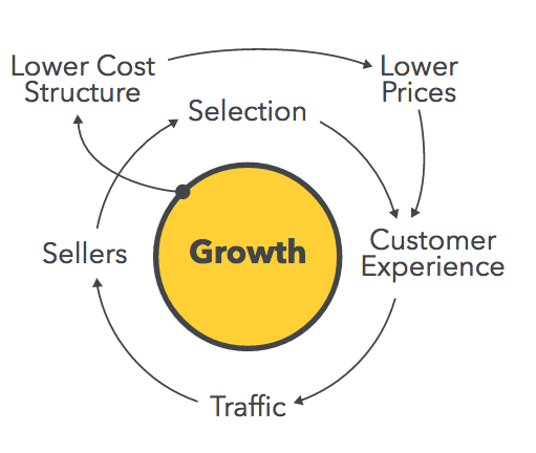Spurred on by a line that has pushed up and to the right for a long time, and a private equity mentality that is focussed on a quarterly number that was bigger than last quarter, some businesses have made ‘Growth’ their North Star Metric.
It seems obvious. Growth is baked into the concept of business. Therefore, everyone in the business is responsible for growth. So breaking out ‘growth’ as a separate function seems to go against the idea of customer-centricity. Here’s why.
Designing for growth seems especially focussed on investors and stakeholders rather than customers. There are very few instances where growth delivers a better customer experience, but it’s an interesting question to ask… How does growth benefit customers?
Network Effect
Social network users benefit from growth – to a point. But there are diminishing marginal returns for an individual user as a result of growth. Once all your friends, family and favourite brands are on the network it doesn’t make any difference to your experience whether or not the network keeps adding users.
The Amazon Flywheel is another example of growth creating a better experience for customers. Being a marketplace, the more sellers there are means the more product choice there is, which brings more customers, which brings more sellers which leads to downward price pressure.
But this is also a flattening curve. At the beginning, growth has big benefits, but then there comes a point where every new product adds friction to the customer journey. A customer can’t really choose between 927 different yoga mats or 866 dog leads.
Economies of Scale
Netflix has a similar flywheel to Amazon, except that it is not a marketplace. Selection is still the underlying driver. The more content Netflix has, the more value customers get from their $15 a month and the larger the audience, the more money Netflix has to pay content creators to increase the selection.
Growth may also allow companies to negotiate better deals on raw materials or components.
The trendy and emerging area of generative AI is also an area where growth creates a better product. The more users, the more prompts, the more data, the better the results from machine learning.
Designing for Growth
So… there are some situations where growth as a focus can improve the customer experience, however growth is inextricably linked with churn. Creating titles like ‘Growth Designer’ and ‘Growth Hacker’ and ‘Growth Marketer’ focusses the business on top-line metrics which may disguise other problems.
This can be seen when companies talk about revenue without mentioning profit, or valuation without mentioning revenue or profit. What if designing for growth wipes out your brand value?
There are only so many levers available to a business. Successful ecommerce merchants know these.
- Increase the frequency of transaction
- Increase the quantity of transactions
- Increase the value of transactions
- Reduce the cost of transactions
Ultimately, designing for growth means designing for the customer. How to turn customers into evangelists and net promoters by providing the best experience. Because customers don’t care about your growth.
Would Growth Design have produced the Magnum?
Back in 1989, the R&D folks at Unilever decided to find out how much chocolate they could put onto an ice-cream without the outer surface melting. Once they had designed it, they did the numbers and worked out that the ice-cream would need to have a retail price 3 times any other product on the market.
The Magnum was a massive global hit, which drove growth in a relatively mature market. Perhaps a dedicated ‘Growth Designer’ would have hit upon this idea. But a product designer who was focussed on the customer’s love of chocolate and guilty pleasures may have got there faster.
Growth is Just Another Name for Sales & Marketing
At some point, the word sales became tawdry and ugly. The insta-influence generation are above sales. Sales is something done by people in shiny suits. It’s seen as unseemly to ask someone for money or an order. So at some point sales was renamed – growth.
Even the folks at McKinsey rebranded their business strategy playbook from the 1920s as a growth strategy. 7 things to consider… that are all Full Stack Marketing.
- Selling existing products to existing customers – Business as Usual, not exactly a strategy.
- Acquiring new customers in existing markets – Marketing (Promotion)
- Creating new products and services – Marketing (Product)
- Developing new value-delivery approaches – Marketing (Proposition / Price)
- Moving into new geographies – Marketing (Placement)
- Creating a new industry structure – Marketing (Proposition / Product / Price)
- Opening up new competitive arenas – Full-Stack Marketing
Is a focus on growth a valid business strategy? It’s the only business strategy, unless you are in a mature or declining market, in which case another strategy may be useful to think about. Maybe a focus on growth could generate new thinking in mature or declining markets – but it’s still just marketing 101.
Back to basics? Contact Me to learn more about Full-Stack Marketing






No Comments